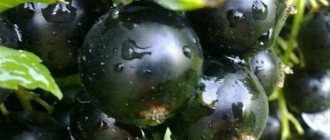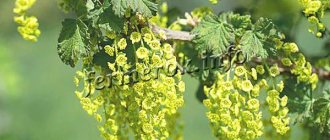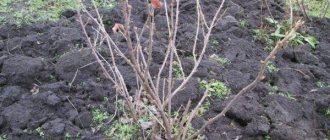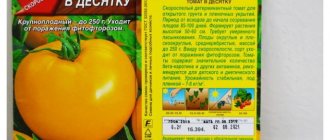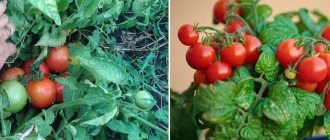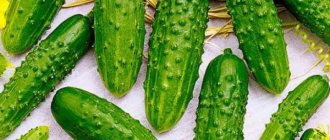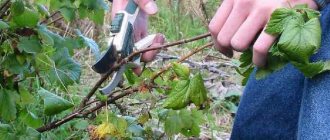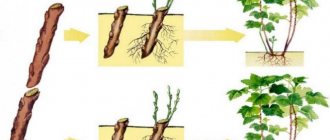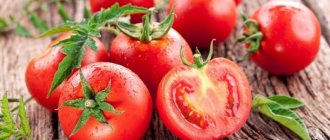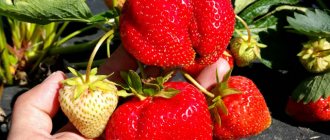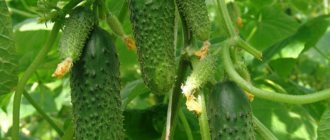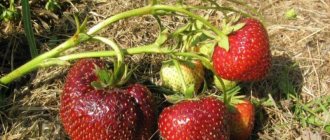The weather in the Urals does not allow growing berry crops of all varieties. Zoned seedlings adapted to a temperate climate, capable of producing a harvest in a short summer with unstable temperatures, are suitable for the region. The best varieties of blackcurrant for the Urals are offered by breeders from the South Ural Research Institute, who have long specialized in breeding crops with different colored berries.
The level of blackcurrant fruiting depends on the variety chosen correctly for the region.
What qualities should currant varieties for the Urals have?
The temperate zone in which the Urals is located is characterized by an average winter air temperature of -20 0C, but the drop can reach -30-38 0C. Even with good shelter, it will be difficult for an unadapted currant variety to overwinter. The berry crop will lose part of the root system, recovery will take time, the vegetation of the green mass will be unsatisfactory, which will primarily affect the yield. Young plants are unlikely to survive the winter, and the currants may die. The main requirement is frost resistance.
The culture is characterized by an early onset of sap flow; vegetation resumes at zero temperature. Therefore, varieties are needed that are zoned in temperate climates with proven winter hardiness. The main threat to a variety that does not correspond to the region will be return frosts. The sap freezes, expands and tears the tissue of the stems and root system. A damaged bush will not produce a harvest; a weakened plant is more susceptible to infection.
When choosing, take into account the timing of fruit ripening. Late varieties will not have time to ripen during the summer period, so mid-season, mid-late varieties are the best option for the Urals. To get a stable harvest, choose a self-fertile crop that can do without pollinators.
Important! To increase productivity, other varieties with the same flowering period are planted.
Preference is given to large-fruited currants with the maximum sugar content in the composition. During breeding work, the resistance of the variety to pests and diseases characteristic of the crop in the Urals is taken into account. With proper agricultural technology and appropriate variety, there will be no problems with cultivation.
for the Urals and Siberia
When choosing the best variety of currants (black, white or red) for growing in a personal plot, a gardener needs to focus on two main factors: the local climate and the composition of the soil in the personal plot. It is these two initial data that the shrub must comply with first of all. Among the variety of currant varieties, you will definitely find the one most suitable for the specific latitude, average air temperature and precipitation level specifically for your area. Beginning gardeners quite often place high hopes on high-yielding southern shrubs, which simply do not survive in the unstable climate of the Urals and Siberia.
The best currant variety is a variety developed by breeders for a specific climate zone. The quantity of berries, their quality, the composition of sugars and acids in them also directly depends on the climate in a certain area. To obtain stable yields for planting in the Urals, it is worth choosing varieties of different flowering periods in order to avoid massive damage to flowers and ovaries from spring frosts.
We present to you a list of currant varieties that are most suitable for growing in the Urals and Siberia. These varieties are high-yielding and are adapted by breeders to sudden temperature changes and other vagaries of the weather in our harsh climate.
The best varieties of red currants for the Urals
Below are several popular red currant hybrids, the cultivation of which has been time-tested.
Lights of the Urals is the result of the work of Novosibirsk breeders, the crop is zoned in the Volga-Vyatka region, an ideal red currant for the Urals.
The “Lights of the Urals” variety is distinguished by medium berry size and stable yield
General characteristics:
- bush of medium or high size, not spreading;
- branches are thin, light brown, slightly curved;
- oval fruits – 0.9 g;
- mid-season crop;
- yield – 1.2 kg per 1 m2;
- The crop is resistant to anthracnose and is rarely affected by pests.
Disadvantage: average winter hardiness; shoots may freeze in spring. Flowers do not respond to a decrease in temperature; the deficiency is not reflected in the level of fruiting.
Ural beauty is a mid-season currant with a tall, dense, compact bush.
The Ural beauty is distinguished by a dense arrangement of fruits on long clusters (up to 7 cm)
Characteristic:
- height – 1.2 m;
- the berries are round, dark red, average weight - 1.5 g;
- long brushes – 6-8 cm;
- yield – up to 4 kg per 1 unit;
- resists frosts down to -30 0C, high winter hardiness;
- good immunity, with proper care does not get sick, among the pests it is affected by aphids.
The berry crop is self-fertile, but without pollinators it loses up to 30% of the yield.
Natalie is a mid-season hybrid with a low, dense, compact bush. The shoots are thin, bending under the weight of the berries, so it is necessary to install a support.
Red currant Natalie is popular throughout the temperate climate zone
The peculiarity of the crop is its long clusters, which can reach 10-13 cm. The arrangement of the fruits is not dense, they ripen evenly, of the same size (up to 1 cm). The shape is round or slightly oblong. Self-fertility is 70%, which is a good indicator for the Ural region. Frost resistance is high and does not respond to return frosts. The yield per bush is about 6 kg. Reproductive age 15-18 years. A plant with high immunity, not affected by insects. Natalie is popular not only in the Urals; it is grown throughout the temperate climate.
Ilyinka is a mid-season hybrid that has been cultivated for many years in cold climates. A crop with high drought resistance, winter hardiness, and is not afraid of abnormal temperature drops.
The color of Ilyinka berries is a rich garnet hue.
General overview of the variety:
- height – 1.5-1.7 m;
- the bush is not dense, with long, thin shoots;
- the brushes are densely located, not long, dense;
- fruits are dark cherry color, oval, weight – 0.9 g;
- productivity – 3 kg from each bush.
The plant is not sick, it may be damaged by sawfly.
BUY CURRANT SEEDLINGS IN THE BEST NURSERY OF THE URAL
How to save frozen tomato seedlings - https://fas.st/dUzHUW" target="_blank">The Scientific and Production Association "Gardens of Russia" has been introducing the latest achievements in the selection of vegetable, fruit, berry and ornamental crops into the widespread practice of amateur gardening for 30 years .
The association uses the most modern technologies and has created a unique laboratory for microclonal propagation of plants. The main tasks of the NPO "Gardens of Russia" is to provide gardeners with high-quality planting material for popular varieties of various garden plants and new world selections. Delivery of planting material (seeds, bulbs, seedlings) is carried out by Russian Post. [/td]
The best varieties of blackcurrant for the Urals
The chokeberry crop is rarely affected by pests, but its immunity to infection is weak. Varieties for temperate climates were bred taking this feature into account.
Chelyabinskaya Festivalnaya is the best black currant variety for the Urals, a hybrid created specifically for the region.
Chelyabinsk festival is distinguished by small berries and stable fruiting
The shrub is small, loose, with thick, stable branches. The brushes are sparsely located and the length is insignificant. The fruits are small - 0.8 g, black, ripen simultaneously. Chelyabinsk festival is mid-early, the berry harvest is 1.5-3 kg. Does not get sick, insects do not parasitize the variety.
Summer resident is a hybrid of the South Ural Research Institute, zoned in the region, all shortcomings were eliminated in the process of experimental cultivation.
Summer resident is the leader among varieties in terms of self-fertility and winter hardiness
The habit of the bush is dense, intensely leafy, height - 1.5-2 m. The clusters are medium length, the berries are quite large, in the range - 2-4 g, with thin and dense skin. Color black with a brown tint. Productivity – 1.5-2.5 kg per bush, achieved due to self-fertility, pollinators are not needed. The summer resident is the earliest in the region, the fruits are harvested in June. The branches are not stable enough, so fixation is necessary.
Miass black is a mid-early crop, adapted to temperate climate conditions. The hybrid has been cultivated for many years; it is the most common variety in the Urals. The berries are the same size, average weight - 0.8 g. High yield is achieved due to long clusters and dense planting of the ovaries. A low, spreading shrub produces 3.5-4 kg.
Miass black berries are medium, all the same size
Self-fertility 75%, frost-resistant currants. Possible damage by anthracnose.
Green Haze is a mid-season hybrid with high drought resistance and winter hardiness.
Green haze is popular because of its densely spaced, long, dense brushes
A low, compact bush is completely covered with clusters growing up to 15 cm. The berries are aligned, weighing up to 1.5 g. The self-fertile hybrid produces about 5 kg per plant. Currants are undemanding to agricultural technology, resist low temperatures well, and are characterized by strong immunity. Suitable for industrial cultivation.
Landing Features
Currants should be planted in an open area so that it is well lit by the sun. It is advisable not to plant shrubs under large trees that will create shade.
When planting currants, distances should be maintained; the distance between bushes should be at least 1 m, and between rows - 2 m. Such distances will greatly facilitate harvesting, and moisture will not stagnate and this will prevent the development of fungal diseases. The hole for the currant bush should be about 50 cm deep.
Important! Seedlings should be watered exclusively with warm, settled water.
The place should be prepared in advance. A couple of months before planting, you should dig up the soil and add ash, it will help reduce the acidity of the soil. It is also recommended to add compost, 1 bucket per 1 m². Add potassium salt 50 g per bush. It is worth paying attention to the seedlings, they should reach 50 cm from the root. There should also be no young shoots. It is better to take plants from experienced gardeners.
Planting is carried out when the air temperature does not drop below +10°C.
Varieties of white and pink currants for the Urals
The Ural White was created especially for the region. This is a dense, medium-sized bush with spreading branches.
Ural white produces round berries with transparent skin
The one and a half meter bush is completely covered with fruits located on long, strong clusters. The berries are light, orange seeds are visible through the transparent shell, and they give color to the fruit. Weight of berries – 1.2 g. Fruiting is early, up to 4 kg. The culture resists low temperatures, withstanding frosts up to 35 0C. It is immune to infection and parasitizes the moth and spider mites.
Smolyaninovskaya is a mid-early hybrid for dessert purposes. It grows up to 1.8 m in height, the bush is formed by long, thick, upright branches.
Smolyaninovskaya is distinguished by light yellow berries
Characteristic:
- the berries are round, light yellow, weighing 0.7 g;
- productivity – up to 6 kg per plant;
- high resistance to frost and drought.
Important! Smolyaninovskaya is often affected by the kidney mite, less often by anthracnose.
Self-fertility is average, pollinators are required.
Varieties of the crop with pink-colored fruits are rare in summer cottages in the Urals. There are few hybrids for the region, the most common of them are presented below.
Muscat pink is a mid-early plant with high immunity, simple agricultural technology and a compact bush.
Muscat pink has bright berries of an unusual color
This decorative dessert variety is distinguished by stable fruiting due to a high percentage of self-fertility. The harvest is up to 7 kg per unit. The berries are round, bright pink with a reddish tint. Weight – 1.3 g. Winter hardiness is high. The plant is not sick; it can be parasitized by spider mites.
Pink pearl is a dessert self-fertile hybrid with delicate, light pink berries, weighing 1.2 g. Mid-early currant. The period from laying the clusters to picking the berries is long.
Pink pearl is a common variety of red currant in the region.
The shrub has a decorative appearance due to its densely growing long racemes, completely covered with fruits. Productivity is high – up to 7 kg. The Canadian hybrid is characterized by high winter hardiness and calmly reacts to abnormal temperature drops.
The best varieties of fruit crops for cold regions
At every dacha there is a place for several black currant bushes that can withstand winter temperatures of -30..-35 °C and delight the owners with early berries.
It is enough to have 1-2 varieties of black currants with different ripening periods in the garden to provide your family with vitamin products until the new harvest. Black currant. © Jerzy Opioła
Blackcurrant varieties for the Moscow region and central Russia
Each blackcurrant variety bred by breeders must undergo variety testing and adaptation to an area with certain climatic conditions. Therefore, the blackcurrant varieties recommended for the region do not always correspond to those declared by the breeders.
So, of all those recommended for the middle zone, the best for the Moscow region are the black currant varieties: Moskovskaya , Izmailovskaya , Belorusskaya Sladkaya , Karelskaya , Detskoselskaya , Paulinka .
The above varieties of black currant are adapted specifically for the changeable weather of the Moscow region.
Belarusian sweet blackcurrant variety is early-bearing and forms a harvest in the second year after planting in a permanent place. Self-fertile, average in terms of ripening.
The berries are large and sweet. Fruiting is annual. The variety is characterized by high winter hardiness, but during spring temperature disasters the flowers suffer from recurrent frosts.
The variety is resistant to a number of diseases and to the bud mite.
In terms of ripening time, the best varieties of black currant are:
Among the early varieties of black currant are Dikovinka , Selechenskaya-2 , Exotika , Seyanets Golubki , Otradnaya , Dachnitsa , Nara , Belorusskaya .
Early ripening of varieties protects crops from powdery mildew. Among the named varieties, Selechenskaya-2 and Exotika stand out for their berry size. The Otradnaya currant variety is fast-bearing, which allows you to collect the first trial harvest already in the 2nd year.
The Nara and Belorusskaya varieties stand out among other early varieties due to their friendly ripening and high berry yields.
Of the medium blackcurrant varieties, Perun and Dobrynya are characterized by resistance to pests and diseases.
Izyumnaya and Dubovskaya varieties are distinguished by their high sugar content, which is reflected in the increased sweetness of the berries with an original aroma.
Black Pearl , Ozherelye , Riddle , Fidelity and others are popular with gardeners
Of the late varieties of black currant - Venus , Vologda - vigorous bushes that form high yields of large berries. The skin of the berries is dense and does not burst in compotes, when making jam, freezing, or other preparations.
Black currant bush. © Thue
Blackcurrant varieties for the Ural and Siberian regions
Blackcurrant varieties bred for the conditions of the Urals have high winter hardiness, can withstand temperature changes and recurrent short-term frosts well - Memory Michurin , Rhapsody , Nina , Sibylla , Kent , Dashkovskaya . If it is not possible to come to the dacha often, you should pay attention to the varieties Nara , Titania , Guliver , which do not fall off when the berries are biologically ripe.
Hercules , Minusinka , Zagadka , Luciya , Buraya , Valovaya , which are distinguished by their unpretentiousness to soil conditions and care, tolerate temperature changes and are highly frost-resistant, can be recommended for summer cottages
Gross blackcurrant variety is mid-season, self-fertile, and is distinguished by large fruits. The variety has several very important features: it is winter-hardy, tolerates temperature changes well, and is slightly damaged by diseases and pests. Zoned for the West Siberian, Ural, Volga-Vyatka regions.
Black currant bush
Blackcurrant varieties for the North-Western and Central regions
grape variety of black currant is early. Drought-resistant, winter-hardy, not affected by bud mites and major diseases. The berries are large and ripen smoothly. Harvesting is almost simultaneous.
The black currant varieties Velaya are medium in ripening, and Vologda are medium late, and are close in biological indicators to the Vinogradnaya variety. They are drought-resistant and winter-hardy. They produce high yields of large berries. Harvest ripening for the Veloy variety is uniform, while for the Vologda variety it is extended over time. Overripe berries of both varieties are prone to cracking.
Of the other blackcurrant varieties recommended for the region, the following varieties are famous among gardeners: Good Ginny (the earliest), Vympel , Fortuna , Pilot (the best late variety), Napev Uralsky , Globus , Slavyanka . All varieties are self-fertile, winter-hardy, with stable productivity. They have good and medium resistance to bud mites and powdery mildew. They tolerate temperature changes well. The berries are large, with good to excellent taste.
See the continuation of the list of frost-resistant varieties of popular fruit crops for cold regions on the next page.
In recent years, honeysuckle has become increasingly popular among gardeners in cold regions. Considering that honeysuckle belongs to the group of cross-pollinated varieties, it requires pollinating varieties to form a harvest. Therefore, several plants of this unusually early and tasty fruit crop are usually planted in gardens. Honeysuckle tolerates frosts down to -38..-45 °C.
Edible honeysuckle
Varieties of honeysuckle for central Russia
Central Russia is ideal for all varieties of honeysuckle bred for Kamchatka, the Far East, North-West, Ural, Siberian and other regions and CIS countries with a suitable climate.
Thus, throughout the Russian Federation, large-fruited, without bitterness with a pleasant sweet-sour taste and high yield, honeysuckle varieties Izyuminka , Bazhovskaya , Lazurit , Maria , Gorlinka , Lenita , Valentina , Vasyuganskaya , Gerda , Volshebnitsa , Blue Spindle and others are popular throughout the Russian Federation. Taking into account the length of the warm season, the following varieties of honeysuckle of different ripening periods are recommended below.
Early varieties of honeysuckle
- honeysuckle variety is frost-resistant and not affected by powdery mildew. The best pollinator is the Chelyabinka variety. Can be grown in shade and partial shade. Fruiting occurs before May 20-25. The berries are long, blue, and taste sweet.
- The honeysuckle variety Amazon is an extremely early, new variety. Frost-resistant. The berries are large, lumpy-elongated, dark blue in color with a bluish bloom. The taste is dessert, without bitterness, sweet and sour.
Of the other early varieties of honeysuckle, the most common varieties are: Blue Spindle (pollinators - Blue Bird, Morena, Tomichka, Kamchadalka), Blue Bird , Volshebnitsa , Vitaminnaya , Rannyaya , Maria and others.
Medium varieties of honeysuckle
- The honeysuckle variety Tomichka needs pollinators. The best of them are Blue Spindle, Pavlovsky, Cinderella. It is distinguished by high productivity of fruits of black, bluish-gray-black flowers with a tuberous shell. Used for dietary and baby food. The fruits have a sweet and sour taste.
- The honeysuckle variety Pavlovskaya needs pollinators. The best are Blue Bird, Blue Spindle, Universal, Tomichka. Characterized by high winter hardiness with good resistance to temperature changes and recurrent frosts. The berries are large with a pleasant sour taste. They practically do not crumble.
Mid-ripening honeysuckle varieties - Nymph , Valentina , Rassvet , Gorlinka - .
Late varieties of honeysuckle
- Honeysuckle variety Dessertnaya , refers to dessert varieties. It is characterized by high frost resistance and resistance to temperature changes. The berries are medium-sized, round-oval, blue-blue in color, covered with a waxy coating. The pulp is dense, sweet and sour taste, aromatic.
- The honeysuckle variety Izbranitsa produces large oval-elongated berries. The pulp is tender, the taste is pleasant.
- Honeysuckle variety Fire Opal , high-yielding. It is distinguished by large berries with a sweet and sour taste and a pleasant aroma. The fruits have a spicy bitterness. The fruits do not fall off when biologically ripe.
Young honeysuckle bushes
Varieties of large currants for the Urals
A black berry is considered large if its weight is at least 4 g; for a red one, the lower value is 1 g. Several popular varieties for temperate climates:
- Yadrenaya is a mid-late hybrid of black currant, the weight of round berries reaches 6-7 g.
Berries of the Yadrenaya variety grow up to 2 cm in diameter
- Chokeberry Pygmy with fruits from 5 to 7.5 g, medium-late yields a stable harvest of up to 6-7 kg.
Short brushes are very dense, densely spaced
- Late chokeberry Pilot produces berries with an average weight of 5.5 g.
Pilot currant is characterized not only by large fruits, but also by high yield
- Popular in the Urals, the large-fruited red currant variety Vostorg with a berry weight of 1.3 g.
- Red currant Mechta produces berries weighing an average of 1.5 g.
The dream is characterized by long bright grapes
Advice! To get really large fruits, hybrids require pruning, fertilizing, disease prevention and pest control.
Caring for currants in the Urals
Different regions have their own rules for caring for currants; in particular, the Urals have the following features.
- Spring pruning is carried out in late March-early April, when the temperature will remain at +12-15°C and the last frosts have passed.
- Currants annually require fertilizing with organic and mineral fertilizers.
- In autumn, the ground under the bushes is mulched, protecting the roots from freezing.
- Preventive treatment of bushes is carried out in the spring, before sap flows and buds swell.
Find out about the Gross blackcurrant variety in this article.
Sweet varieties of black and red currants for the Urals
The nutritional indicator of currants is considered by the State Register commission. Taste qualities are assessed on a 5-point scale. Varieties that contain at least 9% sugar are considered sweet. The following currant varieties are suitable for growing in the region:
- Little Prince - a crop with black fruits, taste - 4.7 points, glucose - 11.6%;
The Little Prince has a minimal acidic taste
- Constellation – chokeberry hybrid with a score of 4.8 points, glucose – 10.8%;
The constellation has large fragrant berries
- Sugar - red-fruited hybrid, taste score 4.9, containing 9.2% sugar;
Sugar with a pleasant sweet taste and persistent aroma
Rose Chair is a variety of red currant with dark pink fruits. The taste score was 4.9, and the sugar content was 10.2%.
Rose Chair is interesting for its bright, unusually colored fruits
Important! Sweet currants are classified as dessert varieties.
Climatic characteristics of the region
Siberia occupies a huge area - from the Ural Mountains to the Pacific Ocean.
Such a vast region is characterized by climatic diversity. In the north there is a subarctic climate, in the center there is a continental climate, in the south there are hot Asian steppes. Siberia is considered the coldest region on Earth. Winters here are long and very frosty. Spring comes late - the snow melts only in mid-April. In May the air warms up to 14 degrees Celsius. In the northern regions, spring warming begins in June.
Summer is hot, sunny, almost never rainy, but short. The average summer temperature is 20-25 degrees. Night frosts can last until mid-June, then retreat, and return by the end of August. Autumn in Siberia is swift, with a rapid transition from summer to winter. At the beginning of September, the air temperature can be equal to 14 degrees Celsius, and by the end of this month it sometimes snows. True, winter comes to Siberia in early November.
The most frost-resistant currant varieties for the Urals
All varieties of crops recommended for cultivation in the region are able to withstand low temperatures. Currants are considered frost-resistant if they overwinter safely at -30-40 0C.
Varieties:
- Dawn - red currant, can withstand frosts down to -300
- Marmaladnitsa is a red-fruited hybrid that can easily tolerate temperatures of 350 C and above without damaging the root system.
- Bagheera with black fruits – frost resistance up to 400 C.
Bagheera is large-fruited, sweet with slight sourness
- Slavyanka with black berries is one of the persistent crops. Withstands temperature drops down to – 45 0C.
Hybrid varieties of the crop do not require covering the bush for the winter.
Features of the region
The Urals are characterized by harsh climatic conditions. Average temperatures in winter can reach from -20 to -40 degrees Celsius. In summer the air can warm up to +35 degrees. In addition, the winter drop in temperature is often accompanied by strong winds. Therefore, the choice of currant seedlings should be based on its frost resistance.
It is also important to select cultivated varieties with different flowering periods. Late spring and frequent frosts can damage the color and ovary of currants, which, in turn, will affect the yield.
Table: varieties recommended for cultivation in different regions
| Region | Early varieties | Varieties of the latest selection | Late varieties | Sweet varieties | |||||||||
| Early sweet | Generous | Lights of the Urals | Jonker van Tets | Ilyinka | Marmalade Girl | Asya | Dutch red | Rosita | Tatiana | Ural beauty | Beloved | Red Cross | Svetlana |
| Northern | + | + | + | ||||||||||
| Northwestern | + | + | + | ||||||||||
| Central | + | + | + | + | + | ||||||||
| Volgo-Vyatsky | + | + | + | + | + | + | |||||||
| Central Black Earth | + | + | + | + | |||||||||
| North Caucasian | |||||||||||||
| Middle Volga | + | + | + | ||||||||||
| Nizhnevolzhsky | + | + | |||||||||||
| Ural | + | + | + | + | |||||||||
| West Siberian | + | + | + | + | + | + | + | ||||||
| East Siberian | + | + | + | ||||||||||
| Far Eastern | + | ||||||||||||
| Ukraine | + | + | + | + | + | + | + | ||||||
| Belarus | + | + | + | + | + | + | + |
Currant Selechenskaya and other high-yielding early varieties
Advantages and disadvantages of early varieties
As you know, every experienced summer resident has at least several bushes of early berries, which allow them to enjoy the fruits even before the start of the main season. They ripen 15-19 days earlier - this is their main advantage, due to which the popularity of such berries has become very great. It is also worth noting that early varieties do not require careful care and there is practically no need to perform any agrotechnical operations or treatments with pesticides before they bear fruit. The only case is when treatment is absolutely necessary (a pest invasion or a massive attack of weeds in the fields).
But there are a large number of disadvantages of early berries. Firstly, their taste is not bad, but in many ways they are inferior to species with medium and late ripening . They are more exposed to fungal diseases and infections after fruiting and require constant care before the onset of cold weather. It is also worth noticing the difference in the fruits. As a rule, late varieties are much larger, moreover, they store very well and contain a large amount of dry matter. This makes them ideal for drying, freezing and canning. Early ripening berries are very poorly stored raw and, as a rule, are unsuitable for long-term transportation.
However, any farm should have early currant bushes that would delight you with delicious sugar fruits at the beginning of summer. Depending on their taste, size, aroma, they can be divided into appropriate groups.
The largest varieties of early ripening black currants
Every summer resident wants to grow large berries that will become not only the pride of the entire plot, but also a worthy decoration for any table. Some varieties can produce fruits weighing up to 7-8 grams, and this weight is an average, not a record. Some berries can reach 12-15 g or more, thus representing incredible value for desserts . Let's look at the most popular "heavyweights".
- Selechenskaya currant. The most popular variety in Russia, as well as in many other neighboring countries. It was launched back in 1995 and was practically not modernized - it was impossible to improve it. Until now, it remains one of the most productive, as it produces up to 145 centners per hectare or up to 4-5 kg of berries per bush. A characteristic feature of this bush is its long clusters, on which, as a rule, at least 12-16 berries are formed. The average weight of one is 6 grams, but a large number of fruits grow up to 12-17 grams, which is of great value for summer residents. The bush is spreading, it is advisable to tie it up. It loves moisture very much, so if you want a lot of large fruits, you will have to provide the shrub with constant watering (watering about every 3 days in spring and summer). Black currant Selechenskaya is responsive to fertilizers; it is advisable to feed it with ammonium nitrate and karbofos.
- Gulliver. A good variety of berries that has gained great popularity in the southern regions of Russia. For its growth, a lot of sun and high humidity are desirable. With ideal care, it produces 2.4-3.4 kilograms of berries, each of which weighs at least 2 grams. The average weight of one fruit is 3.1 grams. Some grow up to 5.1-6.1 g, but this is extremely rare (generally the number of such fruits is no more than 3.3% of the total harvest). The taste is excellent, although there is a slight “sourness”. But it is precisely because of this that most gardeners like the berry. The period until technical ripening is 55-67 days from the moment of flowering. Used for freezing, canning, making mousses and jams, and eating fresh. The leaves, which are often used as spices when preserving vegetables and fruits, are very valuable. A tea or decoction made from the leaves has excellent healing properties and contains large amounts of ascorbic acid. Black currant Gulliver contains a record amount of vitamin C (156 mg) and antioxidants.
- Currant Sybil. One of the most famous varieties of these berries, which has a slightly reddish tint at the stage of technical ripeness. The fruits are relatively large, the average weight reaches 3.9 grams, and the largest of them can grow up to 6-8 g. The bushes are not spreading, have a neat appearance, so they are often planted to decorate the garden plot. From one bush, with good care and favorable weather, you can harvest up to 3 kg, which is a good indicator for this type of currant. Increased winter hardiness and unpretentiousness to moisture have made it one of the most revered varieties in dachas. In the industry, Sibylla is no less popular. It is recommended for export and industrial cultivation; it has an average yield of 128-131 c/ha.
These were the largest varieties that can please you with berries weighing 5.8 and even 10 grams! They have a good dessert taste, a characteristic elegant smell and are very healthy. There are more than 70 black chokeberry varieties, but the ones listed above are the most acclimatized and high-yielding, recommended for cultivation in the southern, central and even northern regions of Russia.
The most delicious varieties of blackcurrant - advice from experienced gardeners
Not everything is gold that is extremely large in size. It is the small berries that are the most delicious, since the sugar content in them is exactly the same as in large fruits (relative to the proportion of dry matter). Based on this logic, it turns out that the smaller the fruit, the sweeter it is. This statement does not always work, since there are varieties of berries with “sourness” or slight bitterness, so let’s figure out what will be tastiest to plant in the garden.
- Currant Raisin. From the name you can immediately guess that the berry contains a huge amount of sugars and is incredibly sweet. The total percentage of all sugars is 10.2%, which is very rare for currants. It is also worth noting its benefits for the body, because the increased consistency of ascorbic acid (aka vitamin C) significantly increases the protective properties of the body. Moreover, the bush is very hardy and easily tolerates spring temperature changes, winter cold and attacks from most pests. Just 1-2 treatments with a systemic insecticide during the growing season can get rid of all insect pests. The yield is low, approximately 11 tons per hectare, the fruit reaches 3.2 grams. Raisin is a variety that is resistant to many pests, especially bud mites.
- Currant Summer resident. This variety is the result of joint work between Dutch scientists and Russian breeding sites. Thanks to excellent acclimatization in Russia, this plant has become extremely resistant to frost in winter and can withstand down to -35 degrees. Among other things, it is extremely sweet and contains up to 9.2% sugars. The consistency of ascorbic acid is also not inferior to the best varieties in Russia - 170 mg per 100 grams of product. The fruits are relatively large, some of them reach 5-6 grams, and the average - 3.9-4.9 grams. With standard care you can harvest up to 121 tons per hectare.
- Pygmy. A favorite variety of many summer residents, which is distinguished by its taste - it is extremely sweet and aromatic, suitable for preparing many desserts and simply for eating from the bush. The berries are small, only 2-3 grams, but contain 9.5% sugar and up to 214 mg of ascorbic acid per 100 g of product. The bushes are slightly spreading, the stems are very thick and strong, due to which it easily tolerates severe frosts in winter and temperature changes in summer. One brush (which is up to 11 centimeters long) can produce from 6 to 22 berries, all of the same size. Excellent presentation and good keeping quality have made it one of the best berries for export to neighboring countries and to market stalls.
- Dobrynya. It’s also a good variety, but its main drawback is its small fruits and low yield compared to heavyweights, which produce up to 10 tons per hectare. Even with good care, you can collect no more than 1.5 kilograms from one bush, but the berries will be extremely tasty and nutritious. They contain at least 130 mg of ascorbic acid, as well as up to 9% sugars - this is the main advantage of the variety. The bushes are small, not spreading, have an excellent decorative appearance, and therefore appeal to many gardeners.
These were the most delicious black berries that you can plant in your front garden. They are perfectly acclimatized in the middle zone, and are also recommended for cultivation in many southern regions of Russia, Ukraine, Moldova, and Belarus. They don't have record harvests or giant fruits, but their jams and mousses are the best in the country!
grounde.ru
Selecting a variety by ripening time
Depending on the timing of ripening, red currant varieties are classified into early, mid-ripening and late. Each of these categories already has its favorites.
Early
If the gardener wants to harvest red currants at the end of June or climatic conditions require it, then preference should be given to early ripening varieties:
- Jonker van Tets;
- Early sweet;
- Cherry Vixne;
- Chulkovskaya.
Jonker van Tets
Jonken van Tets is considered a time-tested variety that has been known to gardeners since the 40s of the last century. The bushes reach almost two meters in height, but the fruits are not too large. There is a hint of sourness in the taste.
Early sweet produces a harvest closer to the beginning of July. The bushes are compact and neat. The fruits are large, with thin skin. Their taste is sour.
Cherry Vixne is characterized by increased cold resistance and drought resistance. The bushes are compact and low-growing. The berries are resistant to cracking and are suitable for transportation over long distances.
Chulkovskaya is a self-pollinating species that is successfully cultivated not only in open ground, but also in a greenhouse. The fruits of this currant are small and very sour. The crop is almost never used for fresh consumption, but is actively used for all types of processing.
Mid-season
To obtain a harvest of red currant berries towards the end of July, it is necessary to plant varieties with medium ripening periods. These include:
- Gift of the Eagle;
- Rowada.
Eagle's Gift
Eagle's Gift produces a harvest by early August. It is distinguished by large tassels, the length of which reaches 15 cm. The berries are not very large. Up to 12 kg of crop is harvested from each bush. The fruits contain many vitamins, which is why they are widely used in folk medicine.
See also When is the best time and how to replant currants correctly
Rowada differs from others in its highly branched bush, the height of which reaches 1 m. Subject to the conditions of agricultural technology and proper care, up to 9 kg of fruits are removed from each bush.
Late
Late-ripening varieties of red currants allow you to enjoy the harvest until the very end of summer. These include:
- Dutch red;
- Tatiana;
- Beloved.
Dutch red
Dutch red currant is one of the time-tested varieties that are grown not only in open ground, but also in greenhouses. It has excellent taste, increased frost resistance, and is suitable for transportation over long distances. Yield indicators are at a high level. The fruits ripen from mid to late August and have a slightly sour taste.
Tatyana is a hybrid variety and is characterized by rapid bush growth. Their maximum height reaches 0.6 m. Up to 12 small fruits are formed on each cluster. The taste is pleasant, sweet and sour.
Beloved currant produces up to 8 kg of berries. The bushes are compact and not prone to branching. The harvest is harvested in August.
How to choose a variety depending on the region
When choosing a suitable variety, take into account the climate of the region in which the currants will be planted.
The best varieties of red currants for the middle zone
Here it is recommended to plant plants that have powerful branches and are resistant to low temperatures.
Viksne
A tall shrub that grows up to two meters in height. The bush has strong and powerful shoots that are colored gray. Viksna has good fruiting, thanks to which at least eight kilograms of berries are obtained from the bush. They begin to ripen at the end of June or July.
Vika
A relatively young variety, which was created by domestic breeders for breeding in the middle zone. The main advantages of Vicky include undemandingness to soil composition, excellent productivity, immunity to diseases and the sweet taste of ripe currants.
The berries are covered with red skin with a slight brown tint, they weigh 1-1.2 grams.
Versailles red
A medium-sized plant with long trusses that grow up to 12-14 centimeters. The Versailles bush has large berries weighing about two grams. They are yellow in color and have a pleasant sweetish taste. The yield of such currants is average and therefore no more than five kilograms of crop are harvested from the bush.
Jonker van Tets
The variety is distinguished by the intensive development of bushes that grow up to two meters. The shrub has erect shoots on which fruit clusters appear in early summer. Each of them produces 10-15 flat-round berries weighing 0.5 grams. The surface of the berries is covered with a dense red peel. The currant pulp is sweetish, it contains 4-5 seeds.
Detvan
Czech berry that is resistant to common diseases and pests. Detvan has huge clusters in which 15-17 reddish fruits grow. The yield per seedling is 6-9 kilograms.
Red Cross
An American hybrid variety with wide, spreading bushes one and a half meters high. Red Cross berries are small, their weight reaches 0.4-0.6 grams. Among the advantages of the plant are protection from illnesses and resistance to frost.
See also
Effective measures to combat powdery mildew on currants with drugs and folk remediesRead
Cascade
The plant is classified as a mid-early berry that ripens until mid-July. The cascade has huge hanging fruit cysts 12 centimeters long. The main advantages of ripened fruits of this type of currant include dessert taste, transportability and keeping quality.
Houghton Castle
A vigorous plant bred by Western European breeders. The growing season ends in late summer and Houghton Castle is therefore considered a late ripening plant. The sweet and sour berries are covered with burgundy skin and weigh 1-1.5 grams.
Ob sunset
A vigorous and spreading shrub, the height of which reaches 120-130 centimeters. Ob sunset has small fruits weighing 0.2 grams. The pulp of the ripened harvest is sweet and does not have a sour taste.
Radiant
A high-yielding variety of currants, which is recommended to be grown in the middle zone. Radiant is resistant to frost, and therefore planted seedlings do not die even in severe frosts. The fruits are large, weighing 1.3-1.4 grams.
Assora
Late-ripening currants, whose growing season ends in August. Assora has medium fruit clusters, which contain 10-12 large berries weighing two grams. The shrub is resistant to powdery mildew and frost.
For the Moscow region
There are several currant varieties that grow better than others in the Moscow region.
Rondome
Dutch tall shrub that has powerful leafy shoots. Rondome is distinguished by its productivity and tasty berries. The weight of each currant reaches 1-1.3 grams. Rondom can be grown both in greenhouses and in the open air.
Natalie
Gardeners living in the Moscow region often plant in Natalie’s garden. This is a low bush with large berries that weigh 1.7-1.8 grams. Natalie's pulp has a sweet-sour taste. Shrubs are resistant to common diseases and frosts.
Rosetta
A shrub with powerful branches that can grow up to 145 centimeters. The fruits form on the bush in July, and therefore Rosetta is considered an early ripening plant. The disadvantages of currants include poor resistance to dampness and low yield.
Roland
A new variety of currant, which was created by gardeners from Holland. Among the features of Rolan are frost resistance and good yield. Each bush bears 7-10 kilograms of fruit. The maximum weight of berries is 2-2.5 grams.
Night
A vigorous bush that easily tolerates autumn-winter frosts and is not susceptible to insect attacks. Nochka has medium-sized fruit clusters with red berries weighing 1.3 grams. Harvest ripening ends in the first ten days of August.
Generous
A medium spreading shrub that grows up to two meters when grown in the garden. The round berries turn red after the end of the growing season. They are often eaten fresh as they are not very sour.
For the Urals and Siberia
The climatic conditions of Siberia and the Urals do not allow the cultivation of some types of currants. Siberian gardeners recommend cultivating Diamond currants in the northern regions. This plant has excellent frost resistance and tolerates any frost.
You can also plant Bayan berry, whose root system can develop even in frozen soil. Bayana is resistant to anthracnose, powdery mildew and other fungal diseases.
For the Altai Territory
Breeders have developed several varieties specifically for planting in the Altai Territory.
Fertodi
Mid-season currant created by Hungarian breeders. Fertodi is popular among gardeners due to its resistance to infections, pests and frost. The bush grows up to 2-3 meters and therefore will have to be tied up. Fertodi fruits are too sour, and therefore they are only suitable for processing.
Valencia
Gardeners of the Altai Territory often plant Valencia on the site. This shrub is low-growing, its height does not exceed 75 centimeters. Valencia's fruit clusters reach 14 centimeters in length and produce 14-15 berries weighing 1.5 grams. Valencia is considered a high-yielding type of currant, as the bush produces more than 5 kilograms of berries.
Jennifer
An early-ripening type of red currant, which is grown by many gardeners in the Altai Territory. Jennifer has a good level of productivity. On average, each bush produces more than four kilograms of harvest.
Serpentine
Under favorable conditions, Serpentine bears fruit well, its yield exceeds 6-7 kilograms per bush. The shrub is resistant to soil freezing, infectious diseases and droughts. The fruits are not sour and are suitable for consumption without processing.
For southern regions
Plants with resistance to drought and high temperatures are suitable for planting and further growing berries in the southern regions. It is recommended to plant the following varieties of berries:
- Detvan. A Czech hybrid variety that thrives in warm regions. Despite the fact that Detvan has small berries, its yield reaches 10-13 kilograms per bush.
- Rosita. A tall shrub that grows quickly in the southern regions of the country. Rosita's yield is low - 2-3 kilograms.
For northwestern Russia
The climatic features of the regions located in the northwestern part of the country do not allow the cultivation of many varieties of berries. The following plants are suitable for growing in the northwest:
- Generous. An early-ripening variety created specifically for planting in the northern regions. The harvest will be ripe in the summer, at the end of July.
- First born. Frost-resistant and high-yielding plant with powerful bushes. The fruits of the Firstborn ripen in the 20th of August.
Recommended varieties for Siberia
Varieties have been bred for this region that can withstand Siberian frosts well and quickly come to life in the spring. However, sudden spring frosts, although they do not affect the condition of the buds, can destroy half of the blooming flowers.
Pearl
It is also called Black Pearl. It was released in 1992. Currant bushes are of medium height (up to 1.3 meters). Several clusters with 5-8 berries grow on a branch. The weight of one berry is 2-3 grams. It is possible to collect 4 kilograms of harvest from a bush.
Gross
The best crop bred by Russian breeders. It bears fruit well, rarely gets sick, and does not die in cold weather. The culture is self-fertile, which is why it does not require pollinating insects. The bush is of medium height, spreading. The berries are sweet and sour, juicy, weighing 2.5 grams.
The crop begins to actively bear fruit only 3 years after planting. From one plant it is possible to collect 4 kilograms of harvest. The berries ripen in early July. It is advisable to insulate the bushes for the winter, although even without shelter they can easily tolerate thirty-degree frosts.
Hercules
The crop is winter-hardy, self-fertile, with a late ripening period. The bush is tall, with straight stems, not very dense. 8-12 berries appear on each cluster. The weight of one is 1.6-3.6 grams. The skin is black, slightly shiny, thin.
Bagheera
A hybrid crop bred from a Scandinavian and Belarusian variety in 1994. It tolerates frosty winters and hot summers equally well. The bushes are dense and spreading, up to 2 meters long. Each brush has 5-8 berries. The harvest ripens in July. It is possible to collect 4 kilograms of fruit from a bush.
Treasure
The variety was bred specifically for Siberia in 1997. The bush is low (up to 1.5 meters). The berries are oval, medium in size, weighing 2 grams. 3.5 kilograms of crop are harvested from the bush.
Ural beauty
Red currant, bred by Ural breeders. The bush is compact, not very tall (up to 1.2 meters). The berries (about 20 pieces) ripen on clusters up to 7 centimeters long. The mass of one is 1.7 grams. Productivity - 3.5-9.5 kilograms per plant.
Peculiarities
The South Ural Scientific Institute of Vegetable and Potato Growing has been developing new varieties of currants for about 25 years. During this time, breeders were able to obtain about 27 varieties, some of them specially created for the climatic conditions of the Urals.
The berry stands out from others due to its high resistance to cold, as well as its high content of useful components. By planting a bush once, you will be provided with fruits for 20 years.
Weather conditions in the Ural regions differ in their severity from the central regions of our country. Winter temperatures, accompanied by wind, can drop to -45 degrees, and in the summer months rise to +40.
When choosing a berry crop variety, give preference to varieties that take into account the above characteristics.
We advise you to choose several different species to plant. In case of frost, the strongest of them will survive, which will help avoid complete loss of the crop.
Thanks to the efforts of collectors, today there are berry varieties that are distinguished by their successful development and rich fruiting in cool regions. When choosing varieties for the Urals, you should listen to local experts. Here's what they can recommend:
- The varieties “Good Gin”, “Sharovidny”, “Ural Tune”, “Sibilla”, “Pygmies”, “Gross”, “Podarok Kuzior” are distinguished by their early ripening;
- an alternative to them will be the favorite varieties - “Pilot” and “Atlanta”;
- mid-late varieties include the varieties “Globus”, “Sudarushka”, “Fortune”, “Venus”, “Prestige” and “Rusalka”;
- the list of later ones included “Bagira”, “Sibirskaya Yadrenaya”, “Local Slavyanka”, “Lvovskaya Krasa” and “Venus”.
The matte-colored berry subspecies listed in this list are able to adapt to severe cold and sudden temperature changes.
Studying the reviews of Ural summer residents and gardeners, we can identify the most popular and delicious varieties of currants, which have successfully taken root in the Northern and Southern Urals and delight local residents with their sweet and aromatic fruits. They are also used as raw materials for sweet preparations, as well as for medicinal purposes.
"Memory of Michurin"
In terms of ripening time, the variety is classified as early ripening. Its taste and smell, as well as the small size of the berries, are especially appreciated. The level of winter hardiness is average. But during the first frost, this variety can keep the inflorescences intact. It is resistant to attack by the bud mite, but powdery mildew and anthracnose pose a danger to it.
"Vigorous"
This mid-ripening currant variety is ideal for residents of the Southern Urals. It was bred by Siberian breeders. Today she is considered the leader among all her “relatives”. The bushes spread quite widely. The variety is distinguished by its large fruits, reaching up to 3 cm in diameter and 7 g in weight. One brush can contain about 9 berries.
The pulp is dense to the touch, slightly sour in taste, and has a refreshing aroma. The yield is quite high: 12 tons of fruit can be collected from 1 hectare. In order for the bushes to develop correctly, they need to be carefully fertilized and rejuvenated.
The best currants for Siberia
In the vast expanses of Siberia with its climate and soils, local and European selections with different ripening periods can take root well. It is natural that seedlings with increased frost resistance from Far Eastern, Altai, and Ural selections occupy a worthy place.
They are bred specifically for the Northern, Northwestern, and Far Eastern regions. However, the latter develop somewhat more slowly at first and begin to grow normally, like their counterparts from Europe, only in the second year after planting.
The best large-fruited varieties here are considered to be those with high resistance to severe frosts and unpretentious growing conditions.
- Those wishing to grow currant bushes with early ripening of large berries can use seedlings of Izyumnaya, Selechinskaya, and Sibylla.
- Among the varieties of the middle period of ripening, large-fruited black currants performed well: Brown Far Eastern (another name is Buraya Favorskaya), Hercules, Globus, Luciya, Yadrenaya.
- Adapted to Siberian conditions for growing late-ripening large , sweet, healthy berries. These include the following varieties: Altai late, Arcadia, Bagira, Venus, Lazy, Mila, Perun, Tatyana's day.
- Fans of super-large black berries with their even distribution throughout the cluster choose seedlings with different ripening periods. Among them are Globus, Dobrynya, Krupnoplodnaya Litvinova, Romantika, Pygmy, Selechinskaya, Sibylla, Yadrenaya. It is characteristic that the roots of the bushes and cuttings remained undamaged even during May frosts down to -10°C.
- For those who, among all indicators, prefer the abundance of the harvest , we recommend Gross, Summer Resident, Druzhnaya, Izyumnaya, Lazy, Ussuri, Yadrenaya. And the most resistant against diseases and pests are considered varieties such as: Globus, Gulliver, Valovaya, Sevchanka, Sibylla.
Varieties resistant to diseases and pests
Carrying out the prevention of all kinds of diseases requires the use of potent drugs, increases the cost of berries, and increases labor costs. By choosing plants that are resistant to bud mite, the gardener increases productivity without hassle:
- Gamma is immune to powdery mildew and has high immunity. The berries are sweet and sour with delicate pulp and shiny skin.
- Sevchanka is not afraid of all kinds of parasites and diseases. The excellent dessert taste will delight gourmets.
- Grace not only has excellent immunity, but also tolerates peak temperatures well, so it is grown in hot southern and cold northern regions. You can remove 2.5 kg of berries from a bush using mechanical harvesting methods.
"Gamma"
"Sevchanka"
"Grace"
When choosing plants for self-growing, it is important to select zoned varieties adapted to the climate of the region where you live.
Varieties for central Russia and the Moscow region
- Early, ripen in late June - early July: Vika, Viksne, Jonker van Tets, Rachnovskaya, Smolyaninovskaya (Belaya Smolyaninovoy);
- Middle: White Fairy (Diamond), Dutch pink, Natalie, Beloved, Niva;
- Late, ripen in August: Bayana, Marmeladnitsa, Orlovskaya Zvezda, Rondom.
Vika
The berries are medium-sized, purple, sweet and sour with pronounced sweetness. The variety tolerates frost well, is early-fruiting and productive. Not afraid of diseases and pests.
Viksne
The berries are medium-sized, beautiful dark garnet color, tasty, with a delicate aroma. They make beautifully colored processed products. The tall, irregularly shaped bush is not afraid of drought and frost. Fungal diseases bypass it, but protection from pests is required.
Jonker van Tets
A well-known and widespread Dutch variety in gardens. The harvest ripens early. The berries are bright red, transparent, with a very pleasant, delicate taste. The tall, straight bush is slightly damaged by diseases and pests. Early flowering exposes flowers and ovaries to damage from spring frosts.
Rachnovskaya
A very winter-hardy Moscow variety, flower buds do not suffer from frost. But, resistance to diseases is only average. Red, juicy berries form long clusters. The taste is pleasant, not very sour.
White Fairy (Diamond)
A neat, medium-ripening bush that is quite resistant to fungal diseases and pests. Brings good yields of medium-sized transparent white berries with a wonderful delicate taste. The variety is self-fertile.
Dutch pink
An ancient European variety. Self-fertile. The berries are quite large, elegant pink, sweet. The tall bush winters well and rarely gets sick. Careful care responds to increased yields.
Natalie
The large, richly colored berries are very tasty and grow in long clusters. A good wintering variety, resistant to gall aphids and bud mites. It is highly self-fertile and, with good care, reliably produces voluminous harvests. It is necessary to provide watering during fruit setting.
Very large berries - Oryol star.
Beloved
Large-fruited Belarusian variety. The berries are bright red, sweet and sour, delicious. Quite resistant to fungal diseases and bud mites. It tolerates winter well and produces large yields.
Niva
Bright red berries, thin-skinned, delicate taste with pronounced sweetness. Little susceptible to diseases; starts producing berries early. Fruitful. It is better to grow south of Moscow.
Marmalade Girl
Ripens very late. Winter-hardy, resistant to powdery mildew and anthracnose. The berries are orangeish with a high content of vitamin C - 84 mg%, and gel well. The taste is sour.
Oryol star
It is distinguished by the large size of its berries, which contain a large amount of pectin and have good gelling properties and a sweet and sour taste. Productivity is high. Immune to powdery mildew disease. Tolerates winter frosts well.
Rondome
The berries are dark red, medium-sized, grow in long dense clusters, and are pleasant to the taste. The variety winters well and does not suffer from powdery mildew, but its resistance to other fungal diseases is average. The bush is of medium height, not spreading.
About the characteristics of black currant
The popularity of black fruits is explained by its number of advantages over red and white ones, namely:
- higher saturation of all aerial parts with essential oils. They are contained in special glands densely located on the underside of the leaves. Therefore, the whole plant has a pronounced aroma, extreme aroma
- the content of ascorbic acid here predominates several times more than in “relative” fruits of a different color. By the way, even still green berries have 4 times more nutrients than fully ripe ones. Is this why our children love not-yet-ripe currants so much?...
- the fruits are less sour and not so watery compared to other fruits of these plants. Therefore, the volume of juice prepared from them will be about 10% lower than from lighter berries
- high frost resistance, which is very important for the cold regions of our country
- the possibility of propagation not only by bushes, but also by cuttings and layering.
Chokeberry is also characterized by high demands on soil moisture, vulnerability to various diseases, and damage by pests. At the same time, it requires constant formation and competent thinning of branches of different ages.
Many of these varieties can bear fruit for up to 30 years with proper care (correct choice of soil and planting site, pruning, watering, loosening, fertilizing, etc.).
By region
When choosing seedlings, a gardener should focus on several rules, the main ones:
- adaptation to local climate conditions;
- composition of the soil at the dacha site.
Focusing on these indicators, gardeners initially create optimal conditions for the growth and development of plants and increase the yield of garden berries.
For the Urals
The climate in the region is continental, this is due to the location of the region inside Eurasia. The multi-kilometer length, especially from north to south, covers 2 climatic regions - the cold Barents Sea and the hot steppes of Bashkiria. Different conditions in the foothills and on the plain. These varieties are intended for cultivation in various conditions.
Red:
- Lights of the Urals.
- Beloved.
- Ural souvenir.
- Chuklovskaya.
- Red Cross.
Black:
- Pygmy.
- Venus.
- Atlant.
- Slav.
- Dashkovskaya.
- Rhapsody.
White:
- Smolyaninovskaya.
- Versailles.
- Ural white.
- Purple.
- Ermak.
- Isabel.
The best varieties of black and red currants for the Urals with a detailed description are presented here.
For Siberia
The climate of the region is heterogeneous in content. Most of the territory has harsh farming conditions, short summers and early winters. Therefore, for such varieties, winter hardiness is the main indicator. Many varieties have been cultivated using wild plants.
Red:
- Beloved;
- Dutch pink;
- Chuklovskaya;
- In memory of Gubenko.
Black:
- Buraya;
- Minusinka;
- Mystery;
- Luchinka;
- Hercules.
White:
- Versailles white;
- Belaya Potapenko;
- Minusinsk white;
- Red Siberian.
In addition to the above, we note that the above varieties of golden currant are successfully grown in the region. Other 15 best varieties for Siberia are described in this material.
For the Middle Band
Regions in the middle zone cannot provide plants with heat, especially during the flowering period. The temperate continental type brings cold and snowy winters and cool, rainy summers with periods of drought and high temperatures. The climate is formed under the influence of the Arctic Ocean, whose winds bring cold and the Atlantic, which carries heat and precipitation.
Red:
- Aleander;
- Karachinskaya;
- Exotic;
- Perun;
- Kilian;
- Venus;
- Mermaid;
- Treasure.
Black:
- Loyalty;
- Vigorous;
- Curiosity;
- A little prince;
- Openwork;
- Bagheera;
- Selechenskaya.
White:
- Versailles white;
- Belaya Potapenko;
- Minusinsk white;
- Red Siberian.
For the Moscow region
The temperate continental climate of the region is a smooth or sudden and sharp transition from warm and mild European weather to the sharply continental Asian climate.
The distant location of large bodies of water allows for a smooth flow from one season to the next. But sudden changes in temperature occur when various atmospheric fronts arrive.
The best varieties of currants for the Moscow region are seedlings with a flowering period in mid-May and the beginning of harvesting in June - July. We recommend planting late varieties of currants, as the flowering period shifts to the end of May, and we begin to harvest in August.
Red:
- Early sweet;
- Jonker Van Tets;
- Rachnovskaya;
- Natalie.
Black:
- Belarusian sweet;
- Detkoselskaya;
- Dobrynya;
- Paulinka;
- Moscow;
- Izmailovskaya.
White:
- Belyan;
- Dessert boulogne;
- Dessert;
- Ural white;
- Minusinsk white.
